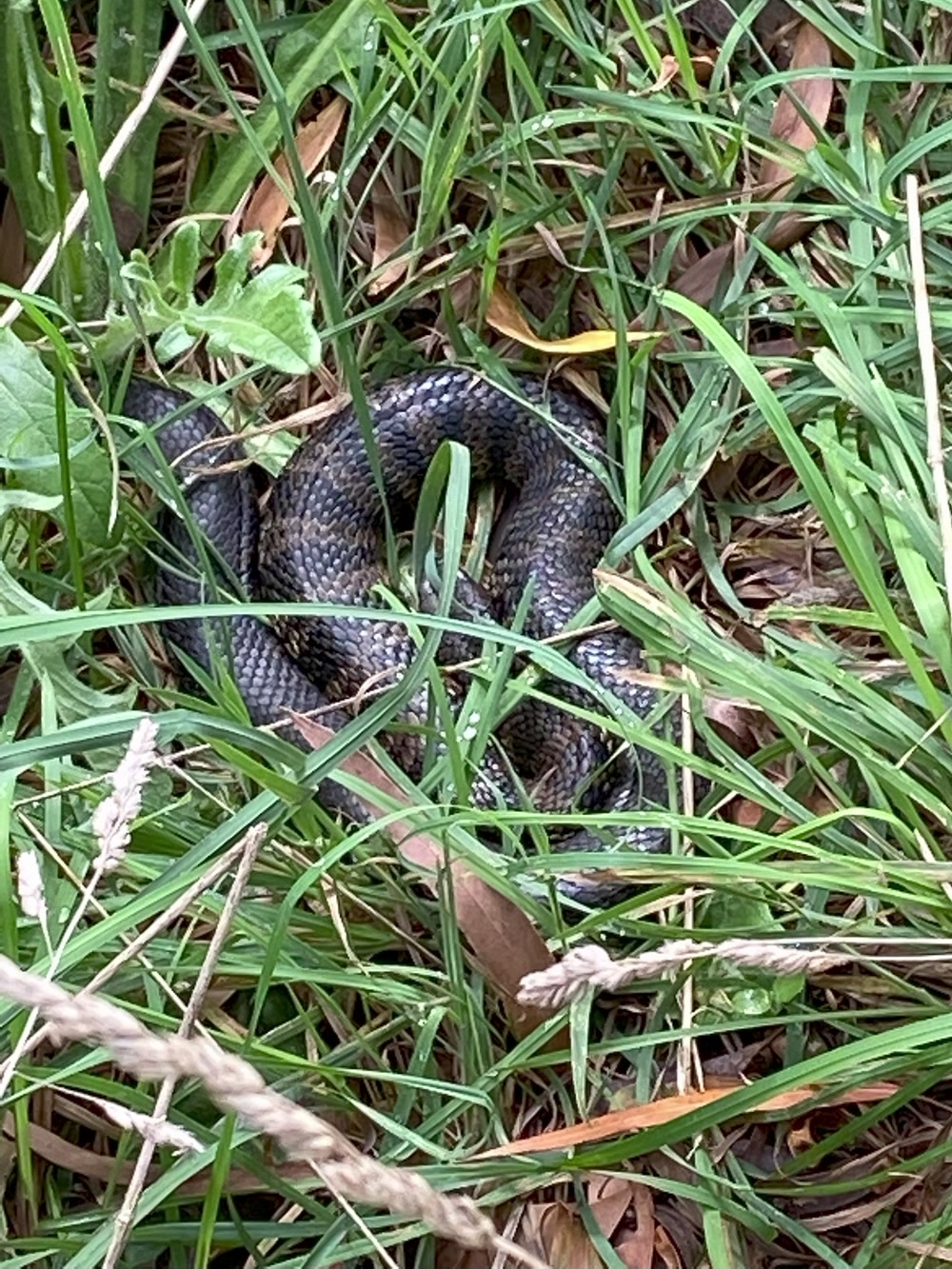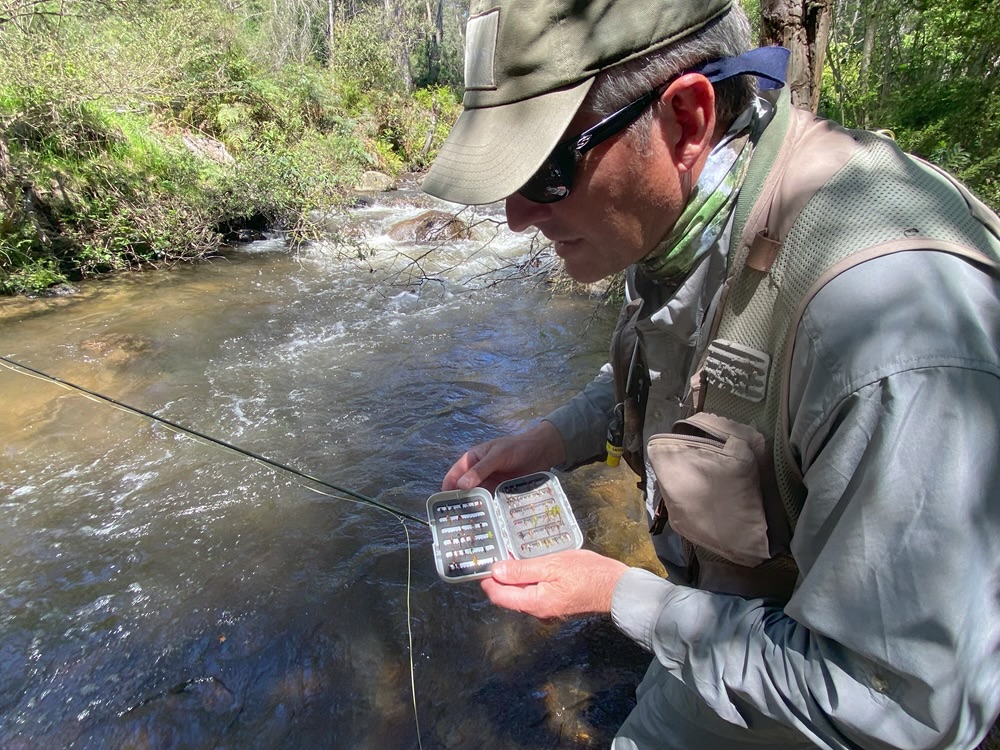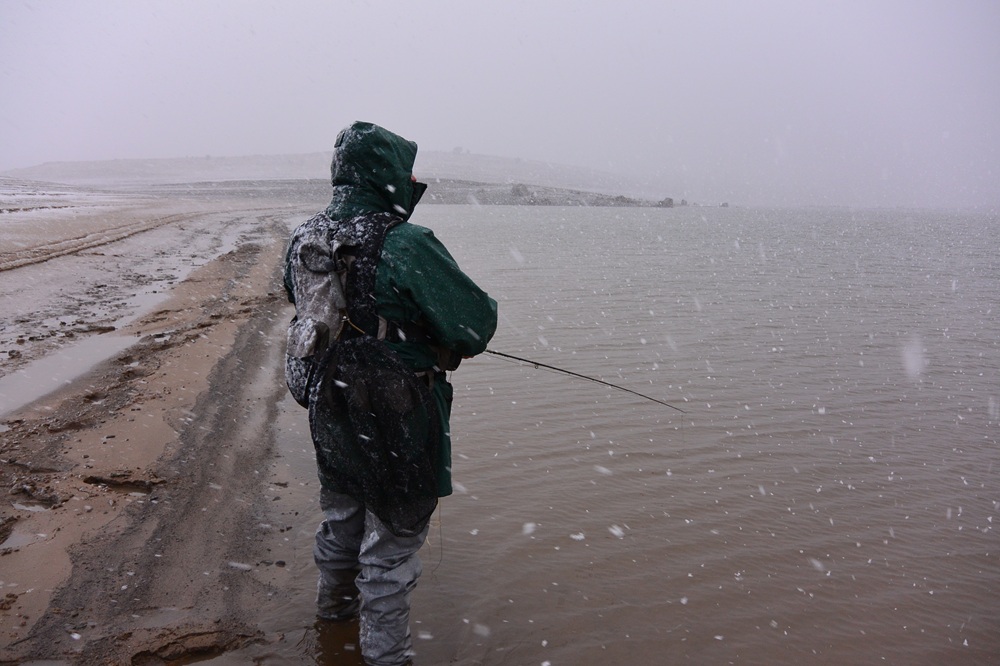
Trout on, but now what?
The coming of the June long weekend is marked in heavy red circles on my calendar, because it is an extremely important time in my fishing year. It portends a distinct change, a transition, a changeover. And it signals the arrival of a calmer, less frustrating time. Less stress and a chance to live a slower, more relaxed lifestyle. The obvious red marks on my calendar mark more than the end of warmer times and the coming of winter; more than the King's Birthday. They signal the temporary cessation of stream fishing, and therefore, a time of celebration of sorts. Let me explain.
With the rivers closed to trout fishing, I no longer have to go out and battle the wilderness synonymous with many streams. I can say goodbye to bush-bashing through thick scrub, traversing steep rocky slopes, clawing blackberries, hidden wombat holes and mine-shafts, stepping onto wasp nests, bull-ants, and being startled by all manner of reptiles. I can say goodbye to ankle-twisting slippery rocks, the occasional dunking in cold water, and I don’t have to worry about leeches – I hate leeches!

I won't miss these.
The season closing means I can say goodbye to the perpetual flyfishing issue of casting on bush-enclosed streams. I reckon fly-casting looks great in the videos on the big rivers; a true art form with long unfurling loops and beautiful gossamer presentations. But in the real world along the scrubby streams I often fish, it is not so pretty. It often requires tailored back-casts or bow-and-arrow casts, or other innovative means to get the fly into the required spot – and all come with associated risks!
I can say goodbye to overhanging bushes, the fallen timber instream at just the wrong place at the head of the pool. Or that one stick which catches the leader, stuffing up a perfect drift just before it reaches the feeding trout. And not having to go into the bush means I get reprise from (excuse the language) bloody tea-trees!! Is there a worse fly- catching plant?

Tight casting, complete with a big dose of tea-tree opposite.
But it’s not just the physical obstacles which I won’t have to battle for the next few months. Stream fishing also requires a lot of changes to adapt to the various conditions and situations encountered. These constant changes mean that by season’s end, I’m sooo over tying knots. Knots to alter tippet length. Knots to change tippet strength. Incessant changing of fly-knots. Breakoff in tea-tree knots. Breakoff on other overhanging bushes knots. Knots to replace flies snagged tantalizingly just-out-of-reach. Knots, knots and more knots. There are so many knots, flyfishing my local streams could be seen as a leading branch of knot-ology. (Look that up and say I’m wrong!)
And there is the stress and complication of tying all these knots with the pressure of fading light at the height of an evening rise. Yep, the season coming to an end gives me welcome respite from so much knot anxiety.
Speaking of anxiety, there are leaders! Making, modifying and repairing leaders – so crucial to fly turnover and fishing success. The constant changing of rivers and conditions – and associated fly choice and method – often means the necessity for leader modification. So, the closing of the season brings relief from this leader trauma. Long leaders, shorter leaders, 3X, 4X, 5X… Matching tippet to fly size, especially small flies. Begone the stress of having to cast those long leaders in tight situations, or altering tippet size to fit through the hook eye when you change from a size 10 hopper to a size 18 F-Fly as evening approaches.

Fly anxiety is often closely followed by knot anxiety.
The break from stream fishing also relieves the pressure of fly choice. Gone are concerns about which fly will work on a Goulburn River evening rise. There’s reprieve from that time-critical pressure of trying to keep up with the changing hatch. Like when the trout start on caddis, then move to duns, then finish on spent spinners – with the tension exacerbated by the knowledge that the rise could end at any moment. I especially won’t miss that!
The closing of the trout river season means relief from those long summer days with the late hour of darkness, and the corresponding late nights when I’m getting home damp from wet-wading, and hungry, and having to cook a feed. I won’t miss the issue of forgetting to take my normal glasses when I decide to stay out late on the river to avoid FOMO if I go home early… but then can’t see my way home as I’ve likely also forgotten a torch. Remember those aforementioned wombat holes?
So on my calendar, the closing of the trout river season is highlighted in bold red circles. I try to persuade myself it’s not a time of sadness, or loss, or reflection. It’s a time of relief, a time to forget about stressful river fishing and its associated traumas. And, the closing river season marks a return to lakes. While I’m not a paid-up, fully-converted lake fisher, I do dabble. Ahhh, winter lake fishing, how cool is that! (Pun intended.) There is hardly a tree to catch the backcast, the cyclic calm nature of cast, retrieve, cast, retrieve, and repeat. Of beanies, raincoats and gloves. Of wild weather, biting cold winds, rain and sometimes sleet. Of (for me) often fishless days.
While winter lakes can be a bit bracing, at least there's usually lots of open space for casting... and no snakes or leeches!
But somehow (without wishing to offend those who enjoy winter lakes) the value of lake fishing to me is that it resets my view of stream fishing. It’s probably the reason that on my calendar is a date in early September, circled in heavy green lines with an accompanying smiley face 😊.












